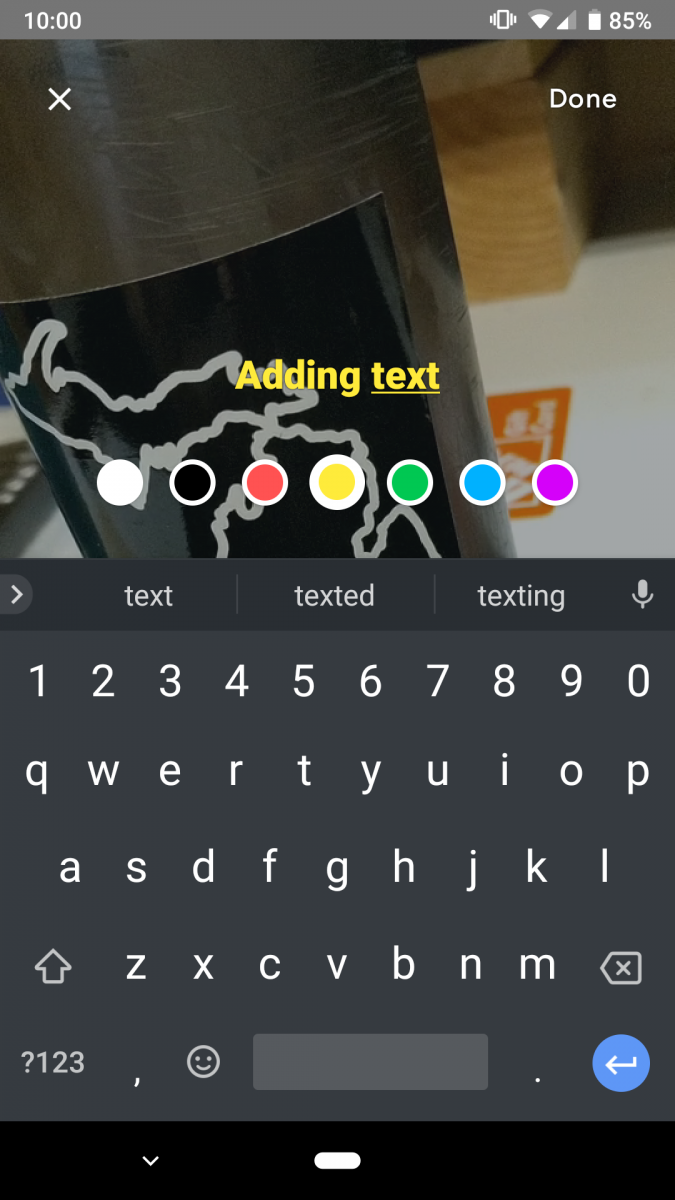
While much of the attention is centered around the upcoming Samsung Galaxy Note 9 launch and the long-awaited Fortnite Mobile on Android unveiling, the other Korean technology giant, LG, is quietly working on their own flagship smartphone—the LG V40 ThinQ. The upcoming flagship smartphone will reportedly have a total of five cameras—three on the rear and two on the front—and will launch a month after the Galaxy Note 9. Now, another mysterious new LG smartphone with the Qualcomm Snapdragon 845 system-on-chip has appeared. We're not 100% sure what this flagship device will be released as, but we've put together as much information as we can on it to try and figure that out.
For starters, all of the information on this new device is based on firmware files we obtained. We examined the firmware files with help from XDA Senior Member SGCMarkus, XDA Recognized Developer autoprime, and XDA Recognized Contributor deadman96385 to summarize the differences between all current and rumored LG smartphones with the Qualcomm Snapdragon 845 SoC. We're strongly leaning towards this device being the rumored LG V40 ThinQ with the possibility that the firmware files are incomplete to explain the discrepancy between the camera specification found in the firmware versus the rumored specification.
"judypn" – A New LG Flagship Smartphone
Evidence for "judypn" being the LG V40 ThinQ
The new smartphone is code-named "judypn." It shares the same base code-name ("judy") as the LG V35 ThinQ ("judyp") and LG G7 ThinQ ("judyln"), so it's clear the three are related. And indeed, the trio of smartphones are all closely related as seen in the firmware. While the LG V35 ThinQ has a POLED display but no notch, the LG G7 ThinQ has an LCD with a notch. Our mystery "judypn" has a POLED display with a notch. Although the AndroidPolice report did not specify whether the LG V40 ThinQ has a POLED display, LG confirmed to AndroidHeadlines that the company reserves their POLED displays for their V series of smartphones. Thus, "judypn" matches up with what we would expect from the LG V40 ThinQ.

LG G6 vs. LG G7 ThinQ vs. LG V35 ThinQ
Next, the firmware shows that "judypn" features a Google Assistant button (labeled as "hot1_key".) The LG G7 ThinQ ("judyln") also features a Google Assistant button and has hot1_key defined, whereas the LG V35 ThinQ ("judyp") does not have a Google Assistant button and does not have hot1_key defined. AndroidPolice reported that the LG V40 ThinQ has a Google Assistant button—so there's another point for our "judypn" being the V40 ThinQ.
The model numbers of "judypn" clearly point towards this device being the V40. The model numbers are LM-V400N, LM-V405N, and LM-V409N. Compare that to the model numbers for the LG V35 ThinQ (LM-V350 and LM-V350N) and LG G7 ThinQ (LG-G710, LM-G710, LM-G710N, and LM-G710VM) and you should see the obvious pattern here. The rumored device has variants for Korea, international, Sprint, and Verizon among others, much like the other devices.


Evidence against "judypn" being the LG V40 ThinQ
The most compelling evidence against our mystery device being the V40 is the camera specification. According to the firmware files, it has dual rear cameras (both with OIS), one of which is a wide-angle lens. In comparison, the LG V35 and LG G7 have dual rear cameras (one with OIS, the other wide-angle) while the V40 is rumored to have triple rear cameras. "judypn" is also rumored to have a single front-facing camera like the LG V35 and LG G7, while the LG V40 is rumored to have dual front-facing cameras to support 3D facial recognition. We're chocking up the difference here to be incomplete firmware files we obtained—we believe the AndroidPolice and ETNews reports to be generally accurate.
The last bit of contradictory evidence is the code-name. According to Evan Blass (@evleaks), the LG V40 is code-named "storm." We don't believe this is compelling evidence against our "judypn" being the V40, because, in the very same tweet, Mr. Blass states that the LG V35's code-name is "emma" when it's actual code-name is "judyp." Anyone can verify this for themselves by looking at the build.prop of the device or looking at Google's list of Play Certified devices. Thus, we're really only looking at the camera discrepancy here.
Summary
We've talked a lot about these devices and the differences between them can be pretty confusing. To keep things straight, I've put together a table of everything we know about this mystery device and compared it to the existing LG V35 and LG G7 as well as rumored details for the LG V40. I've left the LG V40 details in a separate column from "judypn" so you can draw a conclusion for yourself whether we're right.
| Specification | LG V35 ThinQ (Confirmed) | LG G7 ThinQ (Confirmed) | Unknown (Rumored) | LG V40 ThinQ (Rumored) |
| Code-name | judyp | judyln | judypn | storm |
| Model Numbers | LM-V350 LM-V350N | LG-G710 LM-G710 LM-G710N LM-G710VM | LM-V400N LM-V405N LM-V409N | Unknown |
| Variants | kt_kr, lao_com, lgu_kr, skt_kr, spr_us, vzw | dcm_jp, kt_kr, lao_com, lao_ldu, lgu_kr, skt_kr, spr_us, vzw | kt_kr, lao_com, lgu_kr, skt_kr, spr_us, vzw | Unknown |
| System-on-chip | Qualcomm Snapdragon 845 | Qualcomm Snapdragon 845 | Qualcomm Snapdragon 845 | Qualcomm Snapdragon 845 |
| Google Assistant button | No | Yes | Yes | Yes |
| Display | 6.0-inch POLED without notch (1440×2880) | 6.1-inch LCD with notch (1440×3120) | POLED with notch (1440×3120) | Notch |
| Battery | 3,300 mAh | 3,000 mAh | 3,300 mAh | Unknown |
| Wireless Charging | Yes | Yes | Yes | Unknown |
| Cameras | Rear: Primary with OIS, Secondary Wide-Angle Front: Single | Rear: Primary with OIS, Secondary Wide-Angle Front: Single | Rear: Primary and secondary with OIS, Secondary Wide-Angle Front: Single | Rear: Primary standard wide lens, Secondary LG ultrawide lens, Tertiary unknown Front: Double (Stereo configuration supporting face unlock?) |
| Quad DAC | Yes | Yes | Yes | Unknown |
from xda-developers https://ift.tt/2v6hwsX
via IFTTT




 835 Octa Core (2.35GHz + 1.9GHz)
835 Octa Core (2.35GHz + 1.9GHz)








